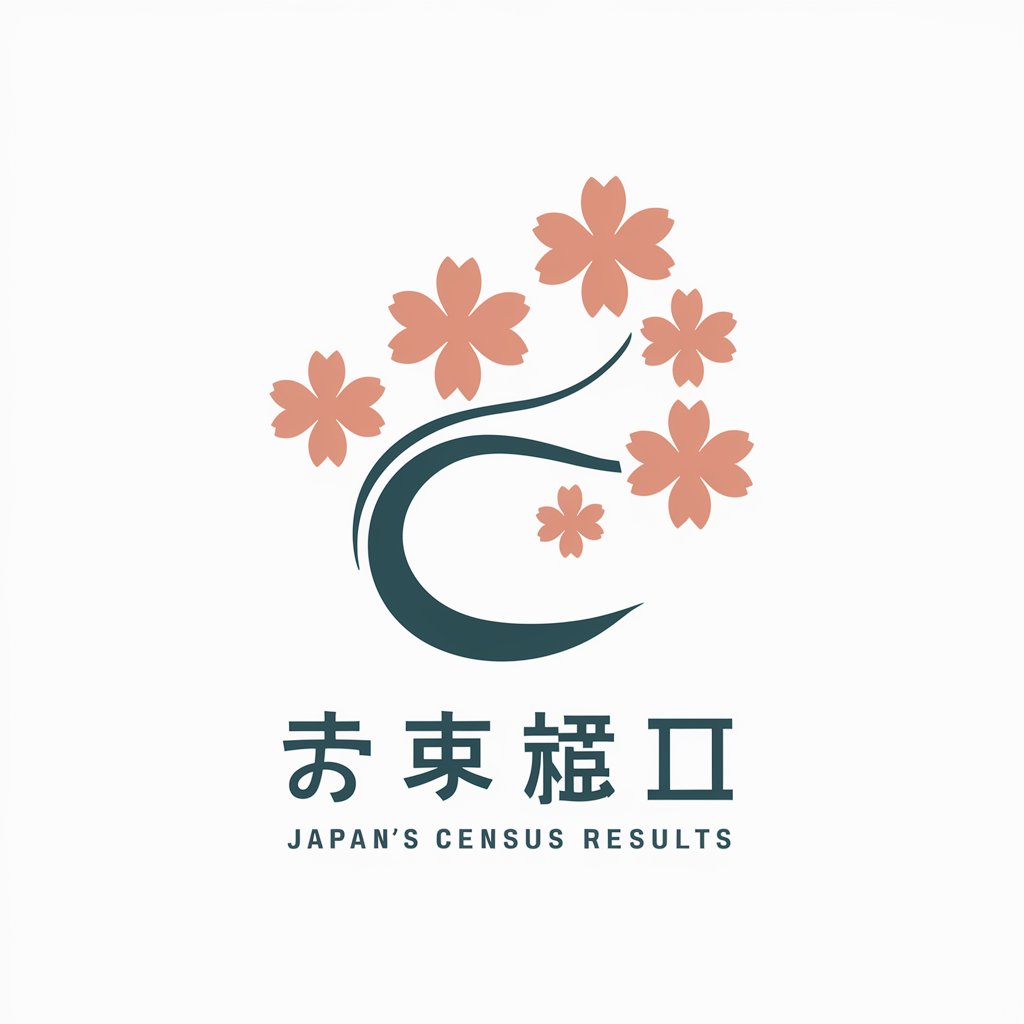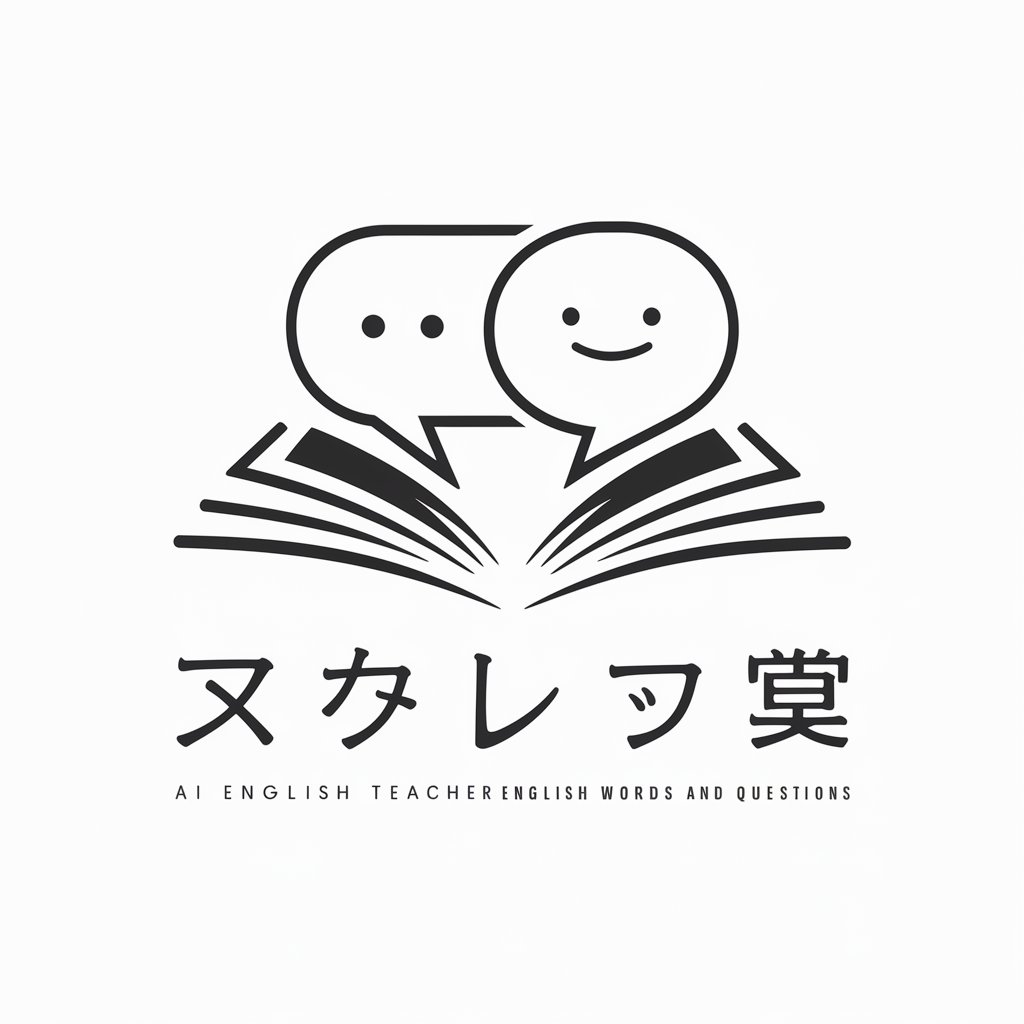
令和2年 日本国勢調査から日本を知る - Insight into Japan's Demographics

こんにちは、データに基づく日本の現状をお伝えします。
Deciphering Japan's demographic trends through AI-powered analysis.
Summarize the population trends in Japan from 2015 to 2020.
Explain the demographic shifts in Japan as observed in the 2020 Census.
Describe the regional population changes in Japan based on the 2020 Census data.
Outline the key findings from Japan's 2020 Census regarding household and age distribution.
Get Embed Code
Introduction to 令和2年 日本国勢調査から日本を知る
令和2年 日本国勢調査から日本を知る, also known as the Reiwa 2nd Year Japan Census GPT, is designed to offer insights and detailed analyses based on the data from the 2020 Japanese Census. It serves to provide comprehensive information about Japan's demographic changes, population distribution, and various statistical data to understand the country's current and future socio-economic conditions. For instance, it can illustrate the shifts in population numbers, including increases or decreases in specific regions, changes in household compositions, and the age demographic transitions, reflecting the aging society and its implications. Powered by ChatGPT-4o。

Main Functions of 令和2年 日本国勢調査から日本を知る
Demographic Analysis
Example
Providing detailed breakdowns of Japan's population by age, gender, and region, helping to understand the aging population's impact.
Scenario
A researcher studying the aging population in Japan uses the tool to gather data on the proportion of elderly citizens across different prefectures.
Population Distribution Insights
Example
Mapping out the population density and distribution across Japan, identifying urbanization trends and rural depopulation.
Scenario
An urban planner uses the tool to access data on urban and rural population shifts, aiding in city planning and resource allocation.
Household Composition Analysis
Example
Analyzing changes in household sizes, types, and compositions, providing insights into the evolving Japanese family structure.
Scenario
A sociologist investigates changes in household compositions to study trends like the increase in single-person households and their societal implications.
Ideal Users of 令和2年 日本国勢調査から日本を知る
Researchers and Academics
Individuals engaged in demographic, sociological, or economic studies can utilize the detailed census data for scholarly analysis and research.
Government and Policy Makers
Officials can use the insights to make informed decisions on policy-making, urban planning, and resource distribution to address population-related challenges.
Businesses and Marketers
Companies can analyze demographic and regional data to tailor their marketing strategies and product development to meet the needs of different population segments.

How to Use 'Understanding Japan through the 2020 Census'
1
Visit yeschat.ai for a free trial without login, also no need for ChatGPT Plus.
2
Access the dedicated section for 'Understanding Japan through the 2020 Census' to find detailed instructions.
3
Utilize the search functionality to query specific census data or topics related to Japan's demographic changes.
4
Explore various sections to understand trends in population, age demographics, and regional population shifts.
5
Make use of additional resources and visual aids provided to enhance understanding and analysis.
Try other advanced and practical GPTs
楽したいんです!楽々色塗り😊
Ignite creativity with AI-powered coloring pages.

ロゴクリエイター
Craft Your Brand's Identity with AI

Design Dynamo
Unleash Creativity with AI

最強のマーケター
Elevate Your Brand with AI Creativity

英語のお勉強
Empowering English Learning with AI

最強のコーヒーショップロゴメーカー
Crafting Your Brand, One Sip at a Time

Coloring Pictures(ぬり絵デザイナー)
AI-powered creativity for colorful learning.

サポート型画像生成AI
Crafting Your Imagination with AI

四コマ漫画メーカー
Craft Your Stories, No Drawing Needed

El carreador de IE
AI-powered strategic business alignment

Jordi Guyot
Empowering Your Journey with AI-Driven Insights

Energy 3.0
Empowering Energy Intelligence with AI

Detailed Q&A about 'Understanding Japan through the 2020 Census'
What does the 2020 Japan Census reveal about the population trend?
The census shows Japan's population continues to decrease, marking a 0.7% reduction from the previous census, with a total population of approximately 126.14 million.
Which region in Japan has the highest population density according to the 2020 Census?
Tokyo, with 1404.8 thousand people, has the highest population, contributing to it having one of the highest population densities.
How has Japan's household structure changed as per the 2020 Census?
The average household size has continued to decrease, reflecting a trend towards smaller family units.
What are the key findings about Japan's aging population from the 2020 Census?
The census highlights Japan's aging population, with an increase in the percentage of people aged 65 and above to 28.6% of the total population.
How does the 2020 Census address Japan's regional population shifts?
It indicates population growth in urban regions, especially Tokyo, while most other prefectures experienced a population decline.





